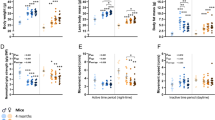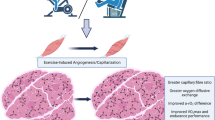Abstract
During development, muscle growth results from the proliferation of satellite cells (SC) and their fusion with fibers. Several studies revealed heterogeneity of SC population notably based on the proliferation rate. Here, we examined the SC characteristics of turkey skeletal muscles in terms of proliferation and more specifically fusion, to define if the ability of these cells to fuse may represent a distinct characteristic between them and could be directly associated with their proliferation properties. Freshly extracted SC were plated in clonal condition and their proliferation rate was assessed 11 days later. To investigate the SC fusion behavior, in vitro and in vivo approaches were developed. Highly and slowly proliferative SC were initially labeled with a nuclear β-galactosidase (β-Gal) activity and co-cultured with differentiated primary cultures. After 5 days, distribution of β-Gal positive (β-Gal+) nuclei was examined. Also, the two labeled SC types were transplanted into different muscles in autologous model. One week later, number of β-Gal+ nuclei per fiber and diameter of fibers displaying β-Gal+ nuclei were determined. In vitro, we showed that SC from turkey skeletal muscle are present as a heterogeneous population in terms of proliferation. Examination of their fusion properties in vitro as well as in vivo revealed that highly proliferative SC exclusively exhibited fusion with differentiated myotubes or myofibers, whereas slowly proliferative SC mainly fused together. Collectively, these data demonstrate for the first time that SC with different proliferation rate also intrinsically differ in their fusion potential, suggesting distinct roles for these sub-populations in muscle growth.




Similar content being viewed by others
Abbreviations
- ald:
-
Anterior latissimus dorsi
- ANOVA:
-
Analysis of variance
- DMEM:
-
Dulbecco’s modified Eagle’s medium
- FCS:
-
Fetal calf serum
- HBSS:
-
Hank’s balanced salt solution
- M199:
-
Medium 199
- MGG:
-
May-Grünwald Giemsa
- MHC:
-
Myosin heavy chain
- PBS:
-
Phosphate-buffered saline
- pld:
-
Posterior latissimus dorsi
- pm:
-
Pectoralis major
- PSF:
-
Penicillin streptomycin fungizonND
- SC:
-
Satellite cell
- SD:
-
Standard deviation
References
Alway SE, Gonyea WJ, Davis ME (1990) Muscle fiber formation and fiber hypertrophy during the onset of stretch-overload. Am J Physiol 259:C92–C102
Bakou S, Cherel Y, Gabinaud B, Guigand L, Wyers M (1996) Type-specific changes in fibre size and satellite cell activation following muscle denervation in two strains of turkey (Meleagris gallopavo). J Anat 188(Pt 3):677–691
Barks JL, McQuillan JJ, Iademarco MF (1997) TNF-alpha and IL-4 synergistically increase vascular cell adhesion molecule-1 expression in cultured vascular smooth muscle cells. J Immunol 159:4532–4538
Baroffio A, Hamann M, Bernheim L, Bochaton-Piallat ML, Gabbiani G, Bader CR (1996) Identification of self-renewing myoblasts in the progeny of single human muscle satellite cells. Differentiation 60:47–57
Beauchamp JR, Morgan JE, Pagel CN, Partridge TA (1999) Dynamics of myoblast transplantation reveal a discrete minority of precursors with stem cell-like properties as the myogenic source. J Cell Biol 144:1113–1122
Beauchamp JR, Heslop L, Yu DS, Tajbakhsh S, Kelly RG, Wernig A, Buckingham ME, Partridge TA, Zammit PS (2000) Expression of CD34 and Myf5 defines the majority of quiescent adult skeletal muscle satellite cells. J Cell Biol 151:1221–1234
Campion DR (1984) The muscle satellite cell: a review. Int Rev Cytol 87:225–251
Cherel Y, Hurtrel M, Gardahaut MF, Merly F, Magras-Resch C, Fontaine-Perus J, Wyers M (1994) Comparison of postnatal development of anterior latissimus dorsi (ALD) muscle in heavy and light-weight strains of turkey (Meleagris gallopavo). Growth Dev Aging 58:157–165
Cosset FL, Legras C, Chebloune Y, Savatier P, Thoraval P, Thomas JL, Samarut J, Nigon VM, Verdier G (1990) A new avian leukosis virus-based packaging cell line that uses two separate transcomplementing helper genomes. J Virol 64:1070–1078
Cossu G, Molinaro M (1987) Cell heterogeneity in the myogenic lineage. Curr Top Dev Biol 23:185–208
Darr KC, Schultz E (1987) Exercise-induced satellite cell activation in growing and mature skeletal muscle. J Appl Physiol 63:1816–1821
Duclos MJ, Chevalier B, Remignon H, Ricard FH, Goddard C, Simon J (1996) Divergent selection for high or low growth rate modifies the response of muscle cells to serum or insulin-like growth factor-I in vitro. Growth Regul 6:176–184
Gibson MC, Schultz E (1983) Age-related differences in absolute numbers of skeletal muscle satellite cells. Muscle Nerve 6:574–580
Gollnick PD, Parsons D, Riedy M, Moore RL (1983) Fiber number and size in overloaded chicken anterior latissimus dorsi muscle. J Appl Physiol 54:1292–1297
Heslop L, Morgan JE, Partridge TA (2000) Evidence for a myogenic stem cell that is exhausted in dystrophic muscle. J Cell Sci 113(Pt 12):2299–2308
Horsley V, Friday BB, Matteson S, Kegley KM, Gephart J, Pavlath GK (2001) Regulation of the growth of multinucleated muscle cells by an NFATC2-dependent pathway. J Cell Biol 153:329–338
Horsley V, Jansen KM, Mills ST, Pavlath GK (2003) IL-4 acts as a myoblast recruitment factor during mammalian muscle growth. Cell 113:483–494
Huard J, Verreault S, Roy R, Tremblay M, Tremblay JP (1994) High efficiency of muscle regeneration after human myoblast clone transplantation in SCID mice. J Clin Invest 93:586–599
Kinoshita I, Huard J, Tremblay JP (1994) Utilization of myoblasts from a transgenic mouse to evaluate the efficacy of myoblast transplantation. Muscle Nerve 17:975–980
Kitazawa S, Ross FP, McHugh K, Teitelbaum SL (1995) Interleukin-4 induces expression of the integrin alpha v beta 3 via transactivation of the beta 3 gene. J Biol Chem 270:4115–4120
Lagord C, Soulet L, Bonavaud S, Bassaglia Y, Rey C, Barlovatz-Meimon G, Gautron J, Martelly I (1998) Differential myogenicity of satellite cells isolated from extensor digitorum longus (EDL) and soleus rat muscles revealed in vitro. Cell Tissue Res 291:455–468
Marino M, Scuderi F, Mazzarelli P, Mannella F, Provenzano C, Bartoccioni E (2001) Constitutive and cytokine-induced expression of MHC and intercellular adhesion molecule-1 (ICAM-1) on human myoblasts. J Neuroimmunol 116:94–101
Mauro A (1961) Satellite cells of skeletal muscle fibers. J Biophys Biochem Cytol 9:493–495
McFarland DC, Doumit ME, Minshall RD (1988) The turkey myogenic satellite cell: optimization of in vitro proliferation and differentiation. Tissue Cell 20:899–908
McFarland DC, Pesall JE, Norberg J, Dvoracek M (1991) Proliferation of the turkey myogenic satellite cell in a serum-free medium. Comp Biochem Physiol 99A:163–167
McFarland DC, Gilkerson KK, Pesall JE, Walker J, Yun Y (1995a) Heterogeneity in growth characteristics of satellite cell populations. Cytobios 82:21–27
McFarland DC, Pesall JE, Gilkerson KK, Ferrin NH (1995b) The response to growth factors of cultured satellite cells derived from turkeys having different growth rates. Cytobios 82:229–238
McNally AK, Anderson JM (2002) Beta1 and beta2 integrins mediate adhesion during macrophage fusion and multinucleated foreign body giant cell formation. Am J Pathol 160:621–630
Molnar G, Dodson M (1993) Satellite cells isolated from sheep skeletal muscle are not homogenous. Basic Appl Myol 3:173–180
Molnar G, Ho ML, Schroedl NA (1996) Evidence for multiple satellite cell populations and a nonmyogenic cell type that is regulated differently in regenerating and growing skeletal muscle. Tissue Cell 28:547–556
Moss FP, Leblond CP (1970) Nature of dividing nuclei in skeletal muscle of growing rats. J Cell Biol 44:459–462
Moss FP, Leblond CP (1971) Satellite cells as the source of nuclei in muscles of growing rats. Anat Rec 170:421–435
Pavlath GK, Thaloor D, Rando TA, Cheong M, English AW, Zheng B (1998) Heterogeneity among muscle precursor cells in adult skeletal muscles with differing regenerative capacities. Dev Dyn 212:495–508
Rosen GD, Sanes JR, LaChance R, Cunningham JM, Roman J, Dean DC (1992) Roles for the integrin VLA-4 and its counter receptor VCAM-1 in myogenesis. Cell 69:1107–1119
Sastry SK, Lakonishok M, Thomas DA, Muschler J, Horwitz AF (1996) Integrin alpha subunit ratios, cytoplasmic domains, and growth factor synergy regulate muscle proliferation and differentiation. J Cell Biol 133:169–184
Schultz E (1996) Satellite cell proliferative compartments in growing skeletal muscles. Dev Biol 175:84–94
Schultz E, Heckman-Jones J (1990) Labeling characteristics of satellite cells in vivo. J Cell Biol 111:34a
Schultz E, Jaryszak DL (1985) Effects of skeletal muscle regeneration on the proliferation potential of satellite cells. Mech Ageing Dev 30:63–72
Schultz E, Lipton BH (1982) Skeletal muscle satellite cells: changes in proliferation potential as a function of age. Mech Ageing Dev 20:377–383
Schultz E, Gibson MC, Champion T (1978) Satellite cells are mitotically quiescent in mature mouse muscle: an EM and radioautographic study. J Exp Zool 206:451–456
Schwander M, Leu M, Stumm M, Dorchies OM, Ruegg UT, Schittny J, Müller U (2003) β1 integrins regulate myoblast fusion and sarcomere assembly. Dev Cell 4:673–685
Sola OM, Christensen DL, Martin AW (1973) Hypertrophy and hyperplasia of adult chicken anterior latissimus dorsi muscles following stretch with and without denervation. Exp Neurol 41:76–100
Tailor CS, Takeuchi Y, O’Hara B, Johann SV, Weiss RA, Collins MK (1993) Mutation of amino acids within the gibbon ape leukemia virus (GALV) receptor differentially affects feline leukemia virus subgroup B, simian sarcoma-associated virus, and GALV infections. J Virol 67:6737–6741
Takeuchi Y, Cosset FL, Lachmann PJ, Okada H, Weiss RA, Collins MKL (1994) Type C retrovirus inactivation by human complement is determined by both the viral genome and producer cell. J Virol 68:8001–8007
Watt DJ, Karasinski J, Moss J, England MA (1994) Migration of muscle cells. Nature 368:406–407
Winchester PK, Gonyea WJ (1992a) A quantitative study of satellite cells and myonuclei in stretched avian slow tonic muscle. Anat Rec 232:369–377
Winchester PK, Gonyea WJ (1992b) Regional injury and the terminal differentiation of satellite cells in stretched avian slow tonic muscle. Dev Biol 151:459–472
Yablonka-Reuveni Z, Quinn LS, Nameroff M (1987) Isolation and clonal analysis of satellite cells from chicken pectoralis muscle. Dev Biol 119:252–259
Yang J, Ontell MP, Kelly R, Watkins SC, Ontell M (1997) Limitations of nls beta-galactosidase as a marker for studying myogenic lineage or the efficacy of myoblast transfer. Anat Rec 248:40–50
Acknowledgments
The authors are grateful to F.L. Cosset for generously supplying TE671 cells. The authors also wish to thank F. Rolling for her assistance in manuscript preparation and discussion. We acknowledge M.A. Cheval for technical assistance.
Author information
Authors and Affiliations
Corresponding author
Rights and permissions
About this article
Cite this article
Rouger, K., Brault, M., Daval, N. et al. Muscle satellite cell heterogeneity: in vitro and in vivo evidences for populations that fuse differently. Cell Tissue Res 317, 319–326 (2004). https://doi.org/10.1007/s00441-004-0911-9
Received:
Accepted:
Published:
Issue Date:
DOI: https://doi.org/10.1007/s00441-004-0911-9




